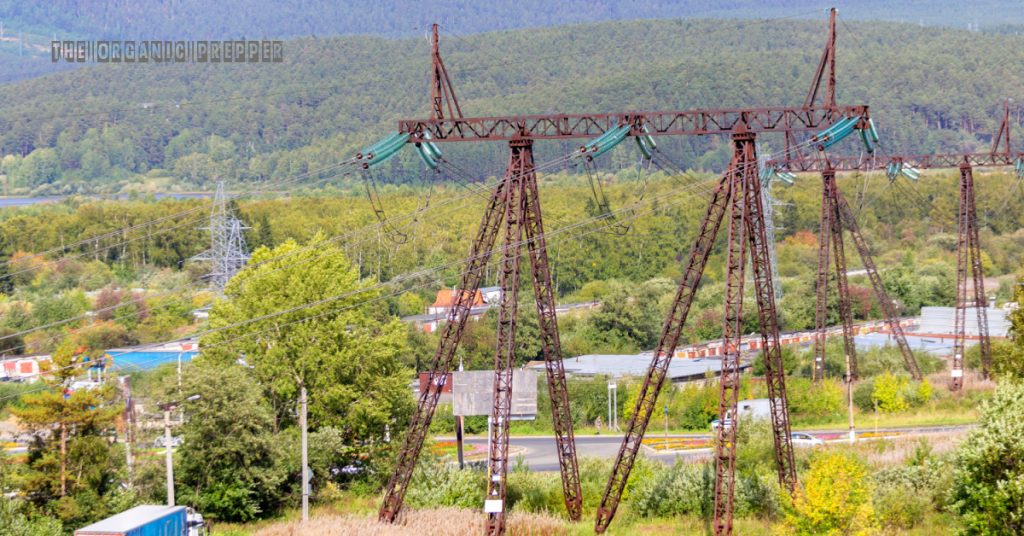Here’s What Infrastructure Neglect and Political Instability Look Like
by Daniela Gonzalez, The Organic Prepper:

The 2019 Venezuelan blackouts were a series of power outages that affected Venezuela from 7 March to 14 March 2019. The blackout was the largest in the country’s history, affecting over 20 million people.
While some areas experienced only a few days without electricity, others suffered one whole week, and remote regions waited a grueling ten days for restoration.
TRUTH LIVES on at https://sgtreport.tv/
A Bitter Memory and a Bleak Future
Five years and some weeks after that event, the blackouts remain a stark reminder of the country’s vulnerability, a bitter event that could repeat without any warning.
The specter of a repeat hangs heavy, fueled by a lack of transparency and accountability from the government. The official narrative has been (of course) pointing fingers at external forces and blaming the US for an alleged “war” against the “revolution” and other similar nonsense.
However, the reality paints a different picture.
The reality is, that the money for the necessary extended maintenance planned was stolen. To provide the military with a continuous source of “resources” (ahem), and avoid potential rebellions, of course, in this report from 2022 they specifically mention that in 2013 the facilities were put under the “custody” of a branch of the armed forces. Already in 2010, after 19 electricity companies were seized and nationalized, the crisis got increasingly worse.
That was to be expected. By doing so, those in power exert what is already defined as some twisted societal control method. The uncertainty for those who can’t work without power and can’t even get paid without energy is awful.
Today, the crippled grid is working at only 29% of its total capacity, and a new blackout is imminent.
What factors contributed to the blackout?
The blackouts were generated by a combination of factors, including:
Lack of investment in the country’s electricity infrastructure
The Venezuelan government had not invested in its electricity infrastructure for many years, and the system was in a state of disrepair. This is the most serious cause of the whole issue and more evident in the lack of maintenance. The high power lines need to have the weeds on their routes periodically trimmed, to avoid an accumulation because of the wildfires. The support structures can suffer fire damage to several degrees. However, this maintenance is expensive and needs resources that the nationalized power company lacks.
I will have to be honest, though. There is an initiative to resume collecting the needed payments, which, for some reason, were stopped in most locations for a long time. It is yet to be seen if the money collected will be used to maintain the infrastructure instead of finding its way to the bottomless pit of the corrupted elite pockets. One of the most recent cases is the energy generation wind park in Paraguana. Designed to produce 100 MWatts, cost a lot of money and hasn’t produced one single volt. Meanwhile, tragedies like the one where a man dies because while he is in surgery the power goes out keep happening one after another. That poor man bled to death.
Drought
A severe sequence of droughts in Venezuela has reduced the water levels in the country’s main source of hydroelectric power.
Political instability
The political crisis in Venezuela has led to a decline in morale and productivity among workers in the electricity sector. This is a factor: back in 2018, there were strikes because of the low wages in the sector. The private distribution companies no longer exist. There is only a nationalized, inefficient, and corrupt company. The official position of the ones driving the state-owned power corporation CORPOELEC is…”sabotage.” With this lie, they disguise their responsibility and manipulate the few weak minds that blindly still follow them.
Of course, this was all part of a scheme in a bigger frame; controlling the power grid, they control the people. Without energy, people can´t work. They already have the mechanisms to deal with the desperation this produces: the colectivos shock troops, responsible already for many shootings into the civilian demonstrations since 2014.
Most rebel states of Venezuela are located in the West: Tachira, Zulia, and Mérida. The three suffer incredible power rationing schedules that are no longer explainable by technical means as they obey a State policy of punishment.
The impact
The blackouts had a devastating impact on Venezuela, mostly on the economy. They caused widespread disruption to businesses, taking down steel, aluminum, and oil production and led to shortages of food, water, and medicine. The blackouts also contributed to the country’s economic crisis, as businesses could not operate without power. Albeit many farms have backup generators, most of them are diesel, and this is not easy to find, either.
The Venezuelan government has been criticized for its handling of the blackouts. The workers who appeared dead (see below) in suspicious circumstances accused the high commands of failing to invest in the electricity infrastructure, and of mismanaging the country’s oil wealth, which could have been used to fund repairs to the electricity grid.
Read More @ TheOrganicPrepper.ca


